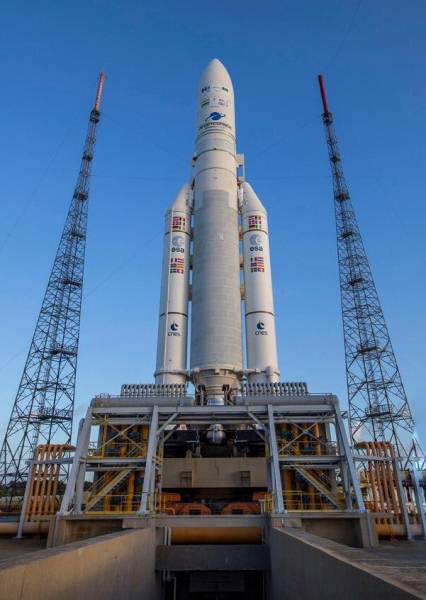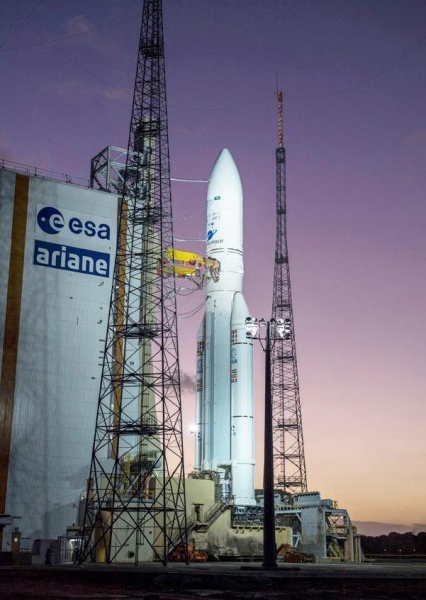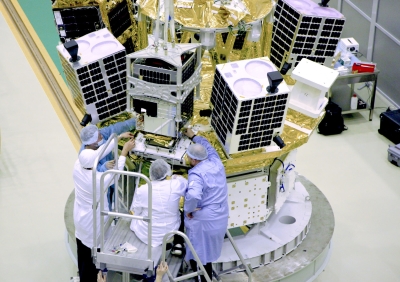


SaudiGeoSat (SGS-1) is the first Saudi satellite for communications. The Kingdom of Saudi Arabia, represented by King Abdulaziz City for Science and Technology, announced its launch on February 5, 2019, from the French Guiana Space Center aboard the 'Ariane 5' rocket. His Royal Highness Prince Mohammed Bin Salman Bin Abdulaziz, the crown prince and prime minister, signed the satellite's final part with the writing “above the clouds”.
Objectives of launching SGS-1
By launching SGS-1, the Kingdom aims to localize strategic technologies as one of the pillars of Saudi Vision 2030, increase local content, and enable Saudi youth to work on updated technologies in the satellite development and manufacturing sector, in addition to enhancing local capabilities and human resources, and creating opportunities in the space industry.
The launch of SGS-1, which was developed in cooperation with Lockheed Martin International, involved the qualification of a number of Saudi engineers, according to approved standards in all stages of manufacturing and testing, to leverage manufacturing and testing expertise in satellite technologies used for space communications in geostationary orbit.
Advantages of the Saudi SGS-1
SGS-1 provides high-speed satellite communications on the Ka-Band as part of a national strategy to provide the Kingdom’s needs. It offers communications services with advanced specifications to be used by government sectors. The coverage area includes the Arabian Peninsula, North Africa, and parts of southern Europe.
Moreover, SGS-1 offers applications that include broadband and secure communications, and communications to semi-remote areas affected by natural factors. This satellite, operated via ground stations in the Kingdom, supports the infrastructure of the communications sector.
Specifications of SGS-1
SGS-1 has a processing unit capable of changing the ascending and descending signal configurations, and a distribution unit capable of transferring communications among users while bypassing ground stations. The Saudi communications satellite employs hybrid (electric and chemical) propelling systems which has helped to reduce the satellite’s weight and increase its life expectancy. It weighs 6.5 t with a life expectancy of over twenty years.
SGS-1 provides secure and anti-interference communications technologies that transmit data encrypted using technologies and algorithms, developed at the King Abdulaziz City for Science and Technology. The satellite contains a multi-beam payload that provides thirty-four GB of throughput capacity, as well as solar panels that generate twenty kW of power.
Related quizzes
Related articles

